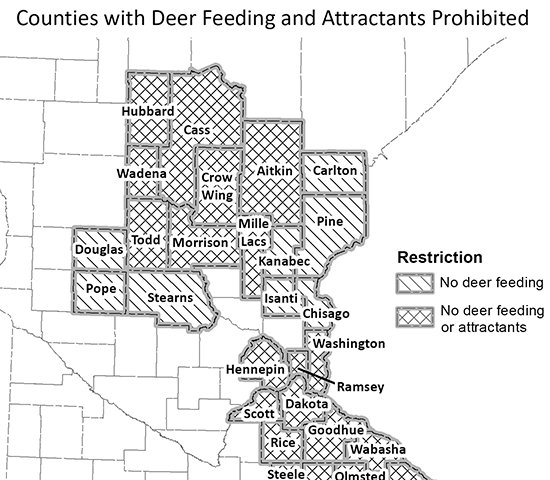Support the Timberjay by making a donation.
DNR’s CWD fight edges closer to the Arrowhead
REGIONAL— It’s probably only a matter of time for the North Country. As the incidence of chronic wasting disease in wild deer moves ever closer to the Arrowhead, the Department of Natural …
This item is available in full to subscribers.
Attention subscribers
To continue reading, you will need to either log in to your subscriber account, or purchase a new subscription.
If you are a current print subscriber, you can set up a free website account and connect your subscription to it by clicking here.
If you are a digital subscriber with an active, online-only subscription then you already have an account here. Just reset your password if you've not yet logged in to your account on this new site.
Otherwise, click here to view your options for subscribing.
Please log in to continue |
DNR’s CWD fight edges closer to the Arrowhead
REGIONAL— It’s probably only a matter of time for the North Country. As the incidence of chronic wasting disease in wild deer moves ever closer to the Arrowhead, the Department of Natural Resources has made several changes to this year’s deer hunting regulations and has expanded a ban on deer feeding in hopes of slowing the spread of this deadly disease.
These changes won’t affect residents or hunters in St. Louis or Lake counties, at least not yet. But neighboring Carlton and Aitkin counties are among those counties now subject to a ban on recreational deer feeding. Deer are more likely to spread CWD when they gather together in close proximity, so residents who feed deer recreationally may contribute to the spread of the disease.
Deer hunters in much of southestern and east-central Minnesota will also find increased CWD sampling, which will remain voluntary in 2020. No CWD sampling will be conducted in the Arrowhead, at least for this year.
Hunters elsewhere will be able to submit samples from their deer at unstaffed sampling stations that facilitate social distancing during the COVID-19 pandemic.
“We are committed to keeping our wild deer healthy, while also facilitating social distancing for hunters and our staff,” said Michelle Carstensen, DNR’s wildlife health program supervisor. “Deer hunters are essential in our surveillance efforts. They’ve been great partners, and we’re confident that their continued participation will help us collect the needed samples to detect disease on the landscape.”
While no CWD has been found in wild deer in the Arrowhead, the disease has spread quickly in recent years, moving from a few southeastern Minnesota counties to parts of central Minnesota. The DNR continues to monitor and manage CWD in an effort to keep prevalence low and reduce spread of the disease.
Hunters in disease management zones, control zones, or surveillance areas can get their deer checked throughout the season by dropping off the head of deer one year of age or older at a self-service sampling station. Hunters are encouraged to submit samples in these areas and zones to help monitor the spread of the disease in wild deer.
Deer harvested in the disease management zones or control zones will have self-service sampling stations available for all seasons. Any hunter who has harvested a deer in a CWD surveillance area can get their deer tested when self-service sampling stations are not available. Current information for station availability is on the CWD webpage. Hunters can call the local DNR wildlife office within that surveillance area to arrange for their deer to be sampled for CWD.
Based on discoveries of CWD in wild and captive deer in new areas last year and this spring, the DNR will monitor and manage the disease in these newly created areas, as guided by its CWD response plan.
Zones located to the north of the metro area include:
East-central surveillance area—created after detection of CWD in a deer farm in Pine County. This area is portions of permit areas 157, 225, 235, 236 and all of permit area 159.
The north-central management zone (DPA 604), southeast management zone (DPAs 643, 645, 646, 647, 648, 649 and 655) and southeast control zone (DPAs 255, 343 and 344) remain the same as last year.
The DNR creates management zones when CWD is detected in a wild deer, to contain the infection and reduce the prevalence in the area, and collect samples to monitor the disease.






